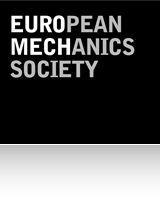601 – Micromechanics of Defects in Crystalline Solids and Metals
Chairperson:
Prof. Pilar Ariza
School of Engineering
Universidad de Sevilla
Camino de los descubrimientos, s.n.
41092-Sevilla, Spain
email: mpariza@us.es
phone: +34 954487397
Co-chairperson
Prof. Viggo Tvergaard
Department of Mechanical Engineering
Technical University of Denmark
Richard Petersens Plads
Building 322, room 225
2800 Kgs. Lyngby, Denmark
email: viggo@mek.dtu.dk
Prof. Michael Ortiz
Institute for Applied Mathematics
University of Bonn
Endenicher Allee 60
D-53115 Bonn, Germany
email: ortiz@iam.uni-bonn.de , ortiz@caltech.edu
Recent developments in experimental science that enable the examination of defects at the atomic scale provide an unprecedented connection between the structure and properties of materials. Techniques ranging from high-resolution electron microscopy to atomic-force microscopy reveal new insights into the micromechanical foundations of material behavior, but also pose deep challenges as regards theory, modeling and simulation. However, the link between the defects themselves and the observed macroscopic behavior is often a difficult one to forge theoretically or computationally and remains an active area of research. Many of the fundamental mechanisms underlying the inelastic behavior and failure of materials are mediated by crystal-lattice defects and are, therefore, accessible to direct atomistic simulation, either by means of empirical potentials or through ab initio quantum-mechanical calculations. Notable examples are furnished by first-principles calculations of the EoS and elastic moduli of metals up to high pressures and temperatures, and the characterization of the structure of point defects, such as vacancies and interstitials, and extended defects, such as dislocations, grain boundaries and cracks. However, in general atomic-scale mechanisms are separated from macroscopic behavior by a vast array of intervening continuum scales. These mesoscopic scales both average and set the boundary conditions or driving forces for the atomic-scale phenomena and are an essential part of the structure of materials. While effective at describing macroscopic material behavior, continuum theories tend to break down on the scale of the lattice, e. g., in the vicinity of lattice defects. Therefore, a complete understanding of material behavior and failure, as well as the predictive computation of the material properties, requires both atomistic and continuum modeling, with the atomistic/continuum handshake most effectively achieved within the framework of multiscale modeling.
The colloquium will bring together a diverse group of researchers from various areas ranging from theoretical, experimental and computational modeling of the mechanics of materials.
